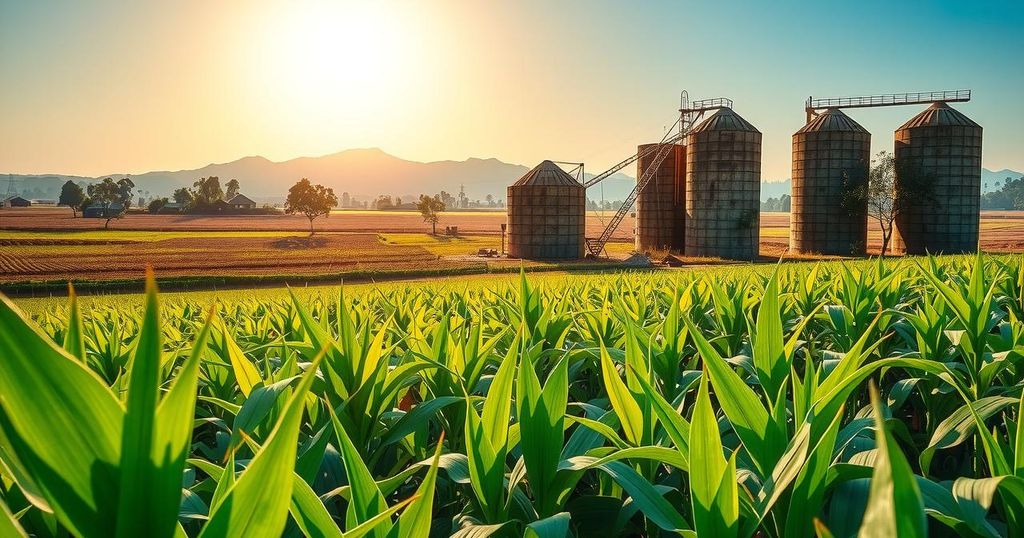Why Do Ghana’s Agricultural Plans Keep Falling Apart?
Ghana’s agricultural plans frequently fail due to political cycles that disrupt continuity and execution. While the government rolls out new initiatives every few years, many farmers remain underserved with inconsistent resources and support. The need for an independent agricultural authority, better data infrastructure, and a bipartisan agreement on food security is crucial for the future of farming in Ghana.
Every few years, a new government in Ghana unveils an ambitious agricultural masterplan, complete with catchy slogans, updated logos, and lofty targets. We have seen initiatives like “Operation Feed Yourself” and “Planting for Food and Jobs” come and go, featuring lots of fanfare. But despite the excitement, many farmers are still left waiting for promised subsidies, and extension officers remain overloaded, as empty warehouses sit under the hot sun.
The heart of the issue is complex; it is not simply a matter of funding or agricultural expertise. Most often, these new administrations reset everything. Continuity in agricultural policy seems to be nearly nonexistent in Ghana. The plans are rolled out with enthusiasm only to be quietly shelved later, leading to a jumble of outdated policies rather than actual results in the fields.
Political discontinuity emerges as a byproduct of democratic governance in Ghana. In a recent discussion, I noted how we must preserve our democratic rights without discarding valuable elements. Yet, as changes in government occur, ongoing agricultural programs tend to be renamed, reshaped, or simply defunded. The new leadership often redistributes staff and resources, creating a sense of confusion and disruption, neglecting the wisdom of previous initiatives.
Take food distribution centers, for instance. Established decades ago, many remain unused today, a consequence of interventions being overlooked after a political shift. As new teams come in, they often lack seamless access to the institutional memory left behind, relying instead on disorganized records that do not facilitate effective agricultural oversight. This disconnect can create a frustrating cycle for farmers and planners alike, perpetuating a confusion that hinders progress.
For farmers, this unpredictability translates into serious challenges. Sometimes fertiliser subsidies are available, other times they are elusive. Price fluctuations worsen their situation, often due to a lack of adequate regulation or infrastructure. I cannot keep track of prices—one moment a watermelon costs ten cedis, and soon after it skyrockets to forty cedis. Works like gɔbɛ are even in short supply now, making life harder for everyone.
Meanwhile, local farmer unions, which were originally designed to enhance production and bargaining power, have now either vanished or lost effectiveness in many areas. This means that rural producers are increasingly forced to face a competitive market alone. Young individuals trained in previous government schemes often find there is no support network to help them navigate access to land or financing, which erodes the momentum gained from their education.
Women, who form the backbone of rural agriculture, bear a heavier burden. While they make invaluable contributions, they face substantial barriers to accessing land and resources. When agricultural programs collapse, these obstacles often intensify, impeding not only gender equity but the overall capacity for food production in Ghana. Consistency is key in agricultural systems—the rhythm of planting, fertilizing, and harvesting must remain steady, and interruptions lead to great harm.
Ultimately, the Ghanaian agricultural sector is rich with potential but shackled by a lack of historical collective memory. Despite existing frameworks like the Savannah Accelerated Development Authority and Planting for Food and Jobs, execution falters due to an inability to build institutions that endure beyond political cycles. Countries like Rwanda have effectively insulated their agricultural policies from unpredictable shifts in politics, a lesson we could learn from.
In conclusion, the challenges faced by Ghana’s agricultural sector are multifaceted. Political cycles disrupt continuity, leaving farmers grappling with inconsistency and uncertainty. Moving forward, establishing independent agricultural institutions, improving data infrastructure, and forging bipartisan agreements on agricultural strategies could provide much-needed stability. Only then can Ghana’s agriculture thrive, allowing farmers to flourish and transforming what is currently a cycle of repetition into a system of sustainable growth.
Original Source: www.newsghana.com.gh




Post Comment